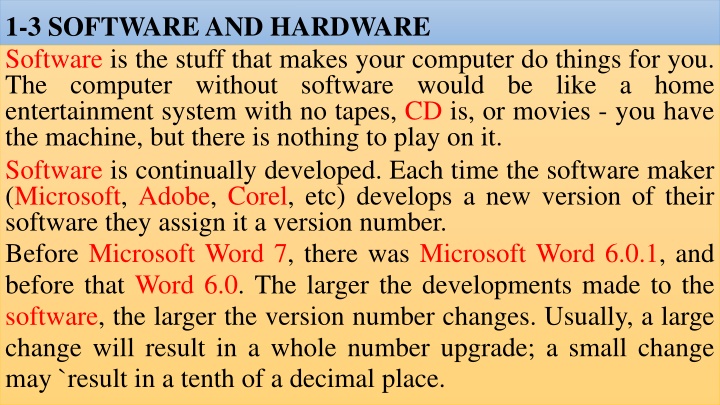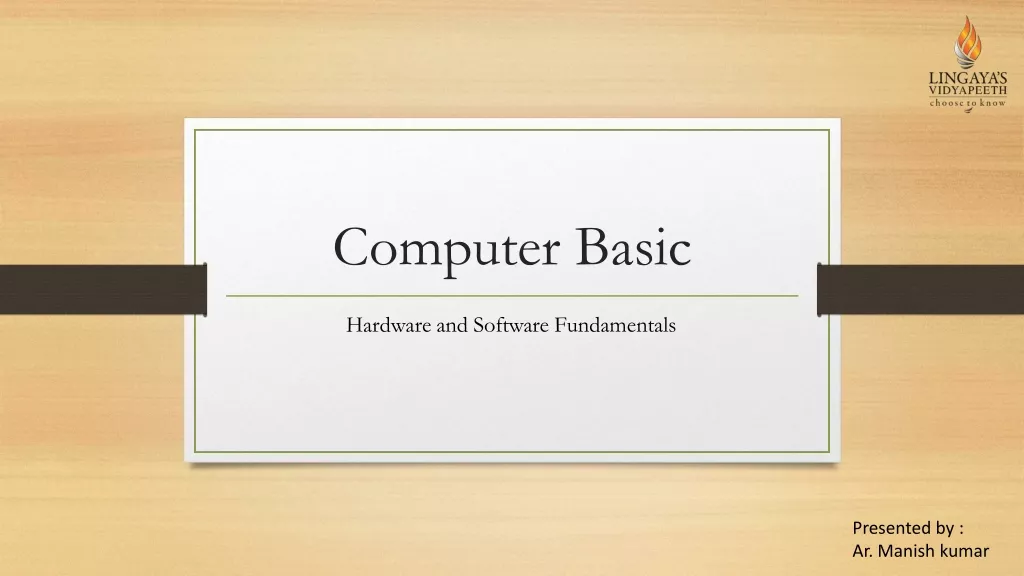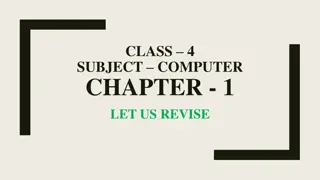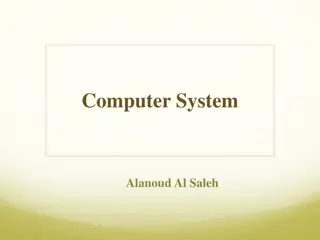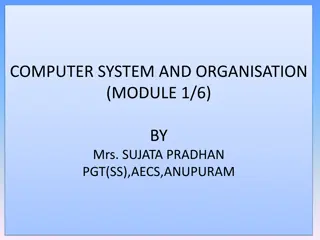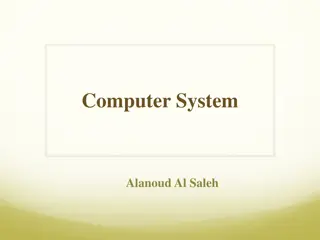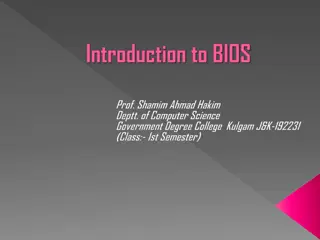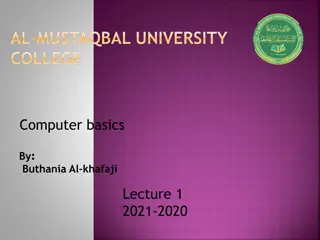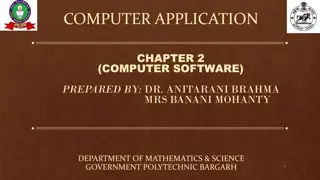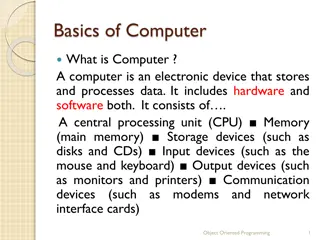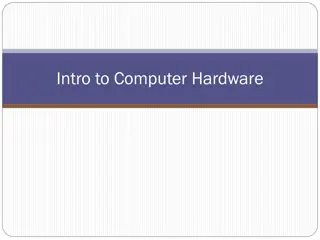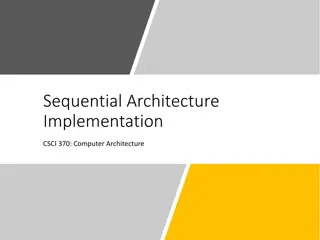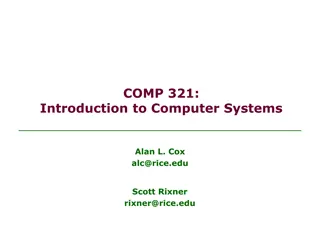Basics of Software, Hardware, and Computer Components
Software enables a computer to function, while hardware comprises its physical components. Learn about the difference between software and hardware, key computer parts like monitor, CPU, and keyboard, as well as their respective roles. Additionally, explore the significance of different technologies used in monitors for optimal display. Understand various computer components and their uses in this informative guide.
Download Presentation

Please find below an Image/Link to download the presentation.
The content on the website is provided AS IS for your information and personal use only. It may not be sold, licensed, or shared on other websites without obtaining consent from the author.If you encounter any issues during the download, it is possible that the publisher has removed the file from their server.
You are allowed to download the files provided on this website for personal or commercial use, subject to the condition that they are used lawfully. All files are the property of their respective owners.
The content on the website is provided AS IS for your information and personal use only. It may not be sold, licensed, or shared on other websites without obtaining consent from the author.
E N D
Presentation Transcript
1-3 SOFTWARE AND HARDWARE Software is the stuff that makes your computer do things for you. The computer without software would be like a home entertainment system with no tapes, CD is, or movies - you have the machine, but there is nothing to play on it. Software is continually developed. Each time the software maker (Microsoft, Adobe, Corel, etc) develops a new version of their software they assign it a version number. Before Microsoft Word 7, there was Microsoft Word 6.0.1, and before that Word 6.0. The larger the developments made to the software, the larger the version number changes. Usually, a large change will result in a whole number upgrade; a small change may `result in a tenth of a decimal place.
Hardware is the term given to the physical components of a computer: e.g., keyboard, monitor, system box or floppy disk drive. Software, on the other hand, is electronic information: files, operating system, graphics, computer programs are all example of software. The difference between hardware and software reflects the duality between the physical and mental worlds: for example, your brain is hardware, whereas your mind is software.
Hardware are those components or physical pieces (things you can touch) that make up the computer. The different pieces of the computer s hardware are monitor, speakers, mouse, CDROM, floppy drive, hard drive, keyboard, Processor, etc. Each piece plays a role in the operation of a computer. CPU, RAM,
3-2 DIFFERENT PARTS OF A COMPUTER AND THEIR USES The standard computer consists of a monitor, a keyboard, a mouse and the system unit. One can attach accessories such as printers and scanners by means of ports. Increasingly in the workplace, computers are connected to printers and other computers by means of a network.
3-2-1The monitor This is the Visual Display Unit (VDU). There are various technologies for the display unit, cathode ray tube (CRT) or Liquid Crystal Display (LCD) or electro luminescent screens or the projector. The monitor or screen displays your work. Facing it down reduces reflected glare from room lights. This reflection may affect your sight. Monitors come in different sizes. The (most important) size of the monitor is measured diagonally on the screen (in inches). Based on this, the monitors range in sizes of 12", 14", 15", 17", 19", 21", 29", etc. Monitors are also characterized by the flatness of their screen. The flatter and the wider screens are usually the better
3-2-2The system box or computer console The system box is where all the computations that the computer performs take place. Inside are the CPU processor, the motherboard, the hard disk, any network or sound cards, memory chips (RAM), printer ports (at the back) and the drive bays for floppy disks, Zip disks or CDs. Outside the casings are the power buttons (ON/OFF and Restart) with some additional facilities like the casing USB ports, Webcams, etc.
